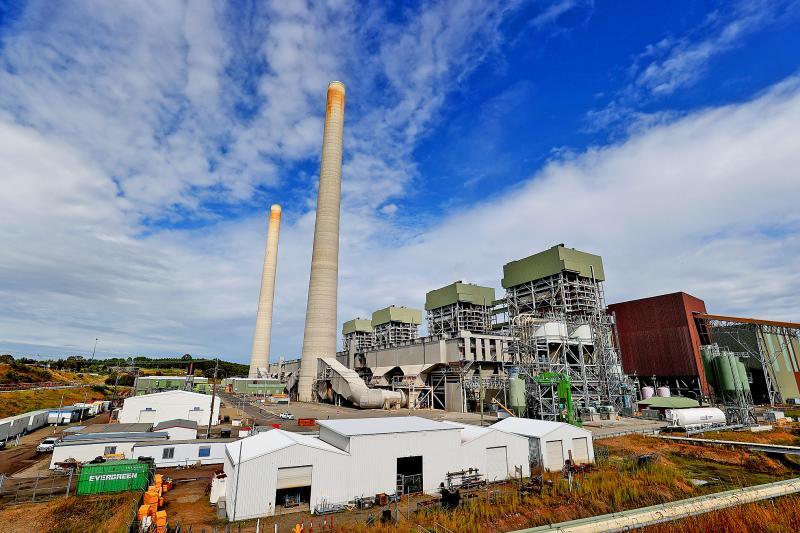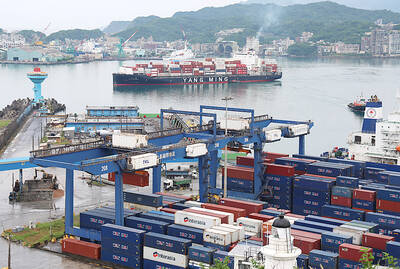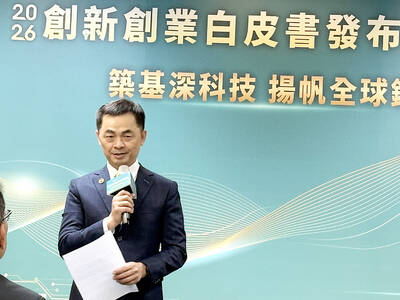Rapidly phasing out coal power plants and mines would be vital for Australia’s new government to meet its more ambitious carbon emissions targets, environmentalists said, while urging renewable energy investments for mining communities.
Australia’s Labor Party formed a new government on Monday, after unprecedented support for the Greens and climate-focused independents ended nearly a decade of rule by the conservative coalition in Saturday last week’s general election.
New Australian Prime Minister Anthony Albanese of center-left Labor has promised to end the “climate wars”— disagreements over the need for action on climate change that have dogged politics in Australia for years.

Photo: Bloomberg
“The election was a strong vote for climate action,” Joe Fontaine, a lecturer in environmental science at Murdoch University in Perth, told the Thomson Reuters Foundation.
A phaseout of coal power is “crucial” to meet the Labor government’s new climate goals, Fontaine said, adding that Greens and independents might push for even more ambitious targets.
Australia’s dependence on coal-fired power makes it one of the world’s largest carbon emitters per capita.
Green groups have long lobbied the federal government to stop supporting fossil fuels to better tackle climate change, especially after devastating bushfires and floods in recent years.
“Climate action [on emissions] will be the key, headliner legislation,” Fontaine said, referring to the new government.
Given existing momentum, the power generation sector will likely be the first to seize the opportunity, he said, citing infrastructure improvements and rules to ensure government vehicle fleets are electric.
Under the 2015 Paris Agreement, Australia — often seen as a regional laggard on climate efforts — pledged to cut greenhouse gas emissions by up to 28 percent by 2030 versus 2005 levels.
However, Albanese has set a new target of cutting carbon emissions by 43 percent by 2030, although he has yet to commit to curbs on new coal mines or scrapping existing fossil-fuel projects.
The government’s new emissions reduction target is not in line with the Paris accord aim of limiting global warming to 1.5°C, said Bill Hare, CEO at think tank Climate Analytics in Australia.
Instead, the country needs to target emissions reductions of 60 percent by 2030 from 2005 levels, he added.
According to analysis by research coalition Climate Action Tracker, Australia’s current climate policies are “highly insufficient,” citing continuing support for new coal and gas projects — with 114 in the pipeline.
“The projected expansion of new coal mines and liquefied natural gas production capacity ... would add to national emissions by 8 percent to 10 percent by 2030,” Hare said.
“Coal power will likely decline more rapidly under the Labor Party policies — given they have a higher renewable energy target — but Labor does not have an explicit target for a coal phaseout,” he added.
Coal power plants in Australia — with a few exceptions — are mostly old and near the end of their life spans, so early closures would be one of the easiest routes to decarbonization, environmentalists said.
Australia’s biggest coal-fired power plant, Eraring, is due to shut in 2025 — seven years earlier than previously planned.
Retiring coal power plants is also made easier by high commodity prices and the rising cost of producing power, although this in turn makes halting coal for export a greater challenge, Fontaine said.
“Finding a transition for the affected workers and communities will be the key for the new Labor government,” he said.
Ensuring new clean power facilities are built to replace fossil-fuel plants is vital, as failure to do so could cause price spikes and potentially harm the reliability of supplies, he added.
“The absolute single most important thing is to build new renewable generation before shutting the old coal power down,” he said.
Currently, Australia’s energy consumption is dominated by fossil fuels, with coal providing about 40 percent, oil 34 percent and gas 22 percent, government data show.
Labor has set a target of renewables providing power for about 80 percent of Australia’s electricity needs by 2030.
The new government will likely look to market forces to help drive down emissions in the coal and gas sector, said Mark Howden, director of the climate, energy and disaster solutions institute at the Australian National University.
Governments, investors and businesses around the world are under growing pressure to halt coal investments to help fight climate change, with some already committing to do so.
A tightening up of environmental laws — making it harder for new extraction of fossil fuels — also appears likely under Australia’s new government, Howden said.
“The question is not so much whether this will work, but whether it will work quickly enough to meet the various emission reduction targets,” he said.

CHIP RACE: Three years of overbroad export controls drove foreign competitors to pursue their own AI chips, and ‘cost US taxpayers billions of dollars,’ Nvidia said China has figured out the US strategy for allowing it to buy Nvidia Corp’s H200s and is rejecting the artificial intelligence (AI) chip in favor of domestically developed semiconductors, White House AI adviser David Sacks said, citing news reports. US President Donald Trump on Monday said that he would allow shipments of Nvidia’s H200 chips to China, part of an administration effort backed by Sacks to challenge Chinese tech champions such as Huawei Technologies Co (華為) by bringing US competition to their home market. On Friday, Sacks signaled that he was uncertain about whether that approach would work. “They’re rejecting our chips,” Sacks

Taiwan’s exports soared 56 percent year-on-year to an all-time high of US$64.05 billion last month, propelled by surging global demand for artificial intelligence (AI), high-performance computing and cloud service infrastructure, the Ministry of Finance said yesterday. Department of Statistics Director-General Beatrice Tsai (蔡美娜) called the figure an unexpected upside surprise, citing a wave of technology orders from overseas customers alongside the usual year-end shopping season for technology products. Growth is likely to remain strong this month, she said, projecting a 40 percent to 45 percent expansion on an annual basis. The outperformance could prompt the Directorate-General of Budget, Accounting and

NATIONAL SECURITY: Intel’s testing of ACM tools despite US government control ‘highlights egregious gaps in US technology protection policies,’ a former official said Chipmaker Intel Corp has tested chipmaking tools this year from a toolmaker with deep roots in China and two overseas units that were targeted by US sanctions, according to two sources with direct knowledge of the matter. Intel, which fended off calls for its CEO’s resignation from US President Donald Trump in August over his alleged ties to China, got the tools from ACM Research Inc, a Fremont, California-based producer of chipmaking equipment. Two of ACM’s units, based in Shanghai and South Korea, were among a number of firms barred last year from receiving US technology over claims they have

BARRIERS: Gudeng’s chairman said it was unlikely that the US could replicate Taiwan’s science parks in Arizona, given its strict immigration policies and cultural differences Gudeng Precision Industrial Co (家登), which supplies wafer pods to the world’s major semiconductor firms, yesterday said it is in no rush to set up production in the US due to high costs. The company supplies its customers through a warehouse in Arizona jointly operated by TSS Holdings Ltd (德鑫控股), a joint holding of Gudeng and 17 Taiwanese firms in the semiconductor supply chain, including specialty plastic compounds producer Nytex Composites Co (耐特) and automated material handling system supplier Symtek Automation Asia Co (迅得). While the company has long been exploring the feasibility of setting up production in the US to address